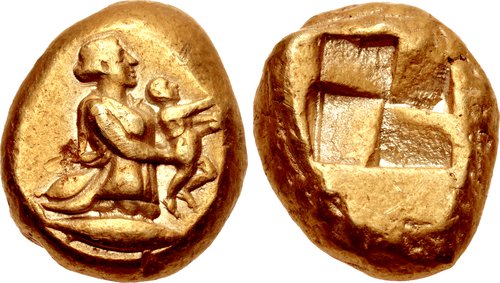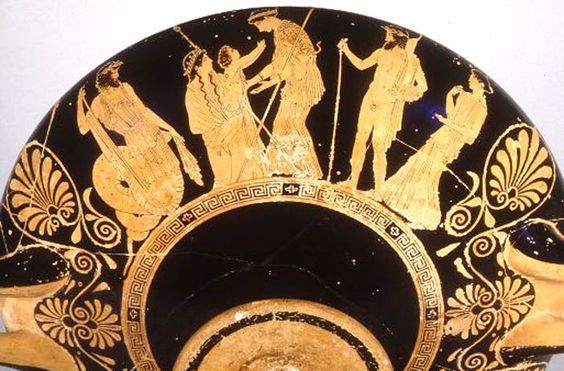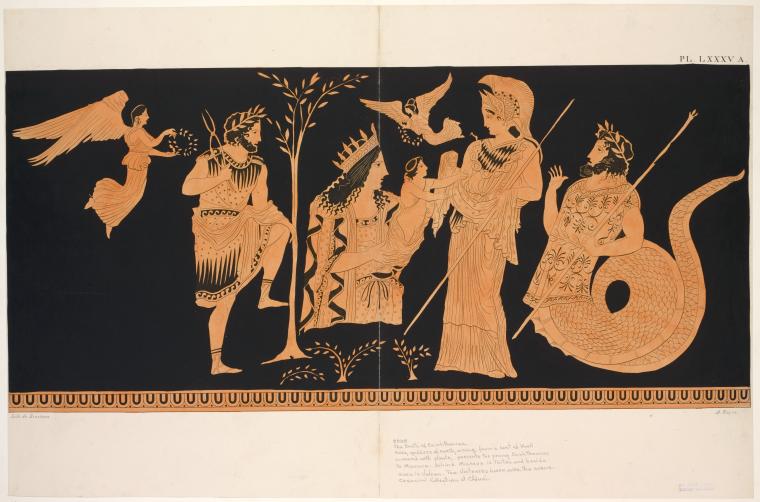In the heart of ancient Mysia, near the shimmering Sea of Marmara, the city of Kyzikos (modern-day Turkey) minted a rare and extraordinary coin during the period of 450-330 BC. This electrum stater, a blend of gold and silver, offers a fascinating glimpse into the rich tapestry of Greek mythology, particularly the tale of Erichthonios, an integral figure in Athenian lore. The coin’s obverse portrays Mother Earth (Gaia) rising from the ground, presenting the infant Erichthonios with both hands, while the reverse features a quadripartite incuse square, resembling a swastika.
The Myth of Erichthonio
Erichthonios is a mythological figure whose story is steeped in the origins of Athens and its early monarchy. According to legend, Erichthonios was born from Gaia (Mother Earth) and Hephaestus, the god of fire and craftsmanship. His birth was unconventional and mystical, reflecting the intricate interplay of divine beings in Greek mythology. Athena, the goddess of wisdom and warfare, took the infant under her wing and entrusted him to the daughters of Kekrops, the mythical first king of Athens, sealing him in a casket with strict instructions not to open it.
Curiosity got the better of the daughters, and upon opening the casket, they were horrified to see Erichthonios, who was often depicted with serpent-like features. Driven mad by the sight, they leapt to their deaths from the Acropolis. Left to his fate, Erichthonios eventually grew up to become a foundational king of Athens, establishing a new dynasty and contributing to the city’s legendary history.
The Coin’s Symbolism and Artistic Representation

The electrum stater from Kyzikos captures a unique moment from this myth. Unlike the later depictions of Erichthonios with serpentine attributes, the coin shows him as a fully human infant, held by Gaia. This portrayal suggests a different version of the story, one that emphasizes the nurturing and divine aspects of his origins rather than the monstrous elements that emerge in subsequent tellings.
The obverse of the coin, featuring Gaia with the infant Erichthonios, symbolizes the birth of a significant mythological and dynastic figure. Gaia’s emergence from the ground signifies the earth’s vital role in creation and sustenance, while the infant in her hands represents new beginnings and the continuation of divine legacy through mortal realms.
The reverse side, with its quadripartite incuse square (swastika), adds another layer of symbolism. While the swastika is now a symbol burdened with modern connotations, in ancient times, it was a common motif representing good fortune, auspiciousness, and cosmic order. Its inclusion on the coin aligns with the ancient belief in the interconnectedness of divine providence and earthly rulership.
Historical and Cultural Significance

The electrum stater from Kyzikos not only serves as a piece of currency but also as a cultural artifact, encapsulating the myths and artistic expressions of its time. Coins like this were not merely economic tools but also conveyed messages about the city’s beliefs, affiliations, and values. By choosing to depict the myth of Erichthonios, Kyzikos underscored its cultural ties to the broader Hellenic world and its reverence for mythological heritage.
Conclusion
The rare coin showing the myth of Erichthonios from Kyzikos is a remarkable blend of art, mythology, and history. It captures a critical mythological narrative that played a foundational role in Athenian identity and kingship. Through its imagery, the coin offers a unique perspective on the ancient world’s storytelling traditions and the ways in which they intertwined with daily life and governance. As a relic from over two millennia ago, it continues to inspire fascination and scholarly interest, bridging the gap between ancient myth and modern understanding.

